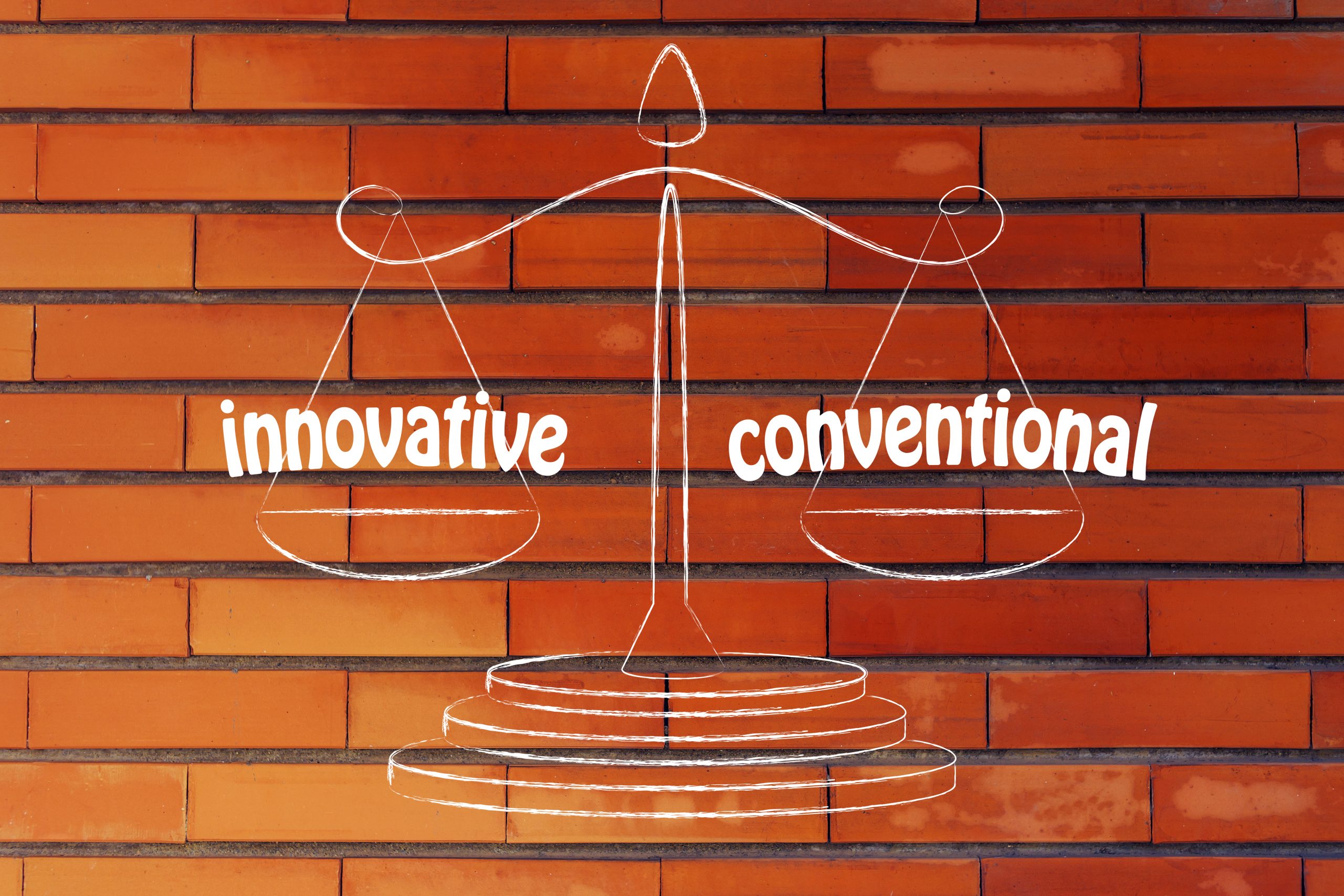“The Federal Circuit went on to observe that no evidence was produced that the claimed size thresholds for the claimed separation were ‘conventional,’ although they were part of the alleged abstract idea, namely, observing what happens naturally.”
 In an August 3, 2020 modified opinion, the U.S. Court of Appeals for the Federal Circuit held certain claims directed to a method of preparation to be patent-eligible at Alice Step 1. The case is Illumina Inc. v. Ariosa Diagnostics Inc., 2019-1419 (Fed. Cir. 2020), and IP Watchdog has already published a more-detailed write-up on the modified opinion that can be found here. I write separately to highlight an interesting quote from the modified opinion that may have currency, not just in biotechnology, but also in computer technology and other arts.
In an August 3, 2020 modified opinion, the U.S. Court of Appeals for the Federal Circuit held certain claims directed to a method of preparation to be patent-eligible at Alice Step 1. The case is Illumina Inc. v. Ariosa Diagnostics Inc., 2019-1419 (Fed. Cir. 2020), and IP Watchdog has already published a more-detailed write-up on the modified opinion that can be found here. I write separately to highlight an interesting quote from the modified opinion that may have currency, not just in biotechnology, but also in computer technology and other arts.
Conventional Technology Can Be Used Unconventionally
For background, the issue in the modified opinion went beyond an earlier Ariosa case in which claims to DNA in a pregnant woman were directed to the patent-ineligible concept that some of the DNA was fetal DNA, to a different and patent-eligible method that recognized that the vast majority of the DNA was maternal, that the fetal DNA was smaller, and that the method included separating the two using this size discrimination and then amplifying the fetal DNA. The claims were therefore not directed to an abstract idea at Alice Step 1 because they were not directed merely to the recognition of a natural phenomenon, i.e., that maternal DNA was larger and more numerous in the mother’s blood than fetal DNA.
Importantly, while the Federal Circuit agreed that the separation techniques used were conventional, the modified opinion also noted that “conventional separation technologies can be used in unconventional ways.” The Federal Circuit went on to observe that no evidence was produced that the claimed size thresholds for the claimed separation were “conventional,” although they were part of the alleged abstract idea, namely, observing what happens naturally.
The Federal Circuit’s analysis was somewhat confusing because it conflated the Alice Step 2 analysis (conventionality) with the first step, namely, deciding whether the claims were directed to an abstract idea in the first place. The Federal Circuit held that the claims at issue were not directed to an abstract idea at Alice Step 1 partially on the above basis, although admitting that “conventionality” typically is part of Alice Step 2. I will not waste time inveighing further on the utterly feckless impenetrability of Supreme Court abstract idea jurisprudence, which at this point is common knowledge.
A Potentially Strong Counterargument
In any case, the Federal Circuit’s analysis from this modified opinion is important because in many abstract idea rejections, particularly in the computer technology arts, the examiner often cuts off the analysis by simply alleging “conventionality” with a conclusory statement. But of course, conventional processors may be used in unconventional (new) ways, just as DNA separation techniques can be. Coupled with the (commonly neglected) requirement of Berkheimer v. HP, Inc. to support an allegation of “conventional” at Alice Step 2 with evidence, this Illumina decision may provide a stronger counterargument to abstract idea rejections.
Image Source: Deposit Photos
Author: Faithie
Image ID: 76218519

![[IPWatchdog Logo]](https://ipwatchdog.com/wp-content/themes/IPWatchdog%20-%202023/assets/images/temp/logo-small@2x.png)

![[Advertisement]](https://ipwatchdog.com/wp-content/uploads/2024/04/UnitedLex-May-2-2024-sidebar-700x500-1.jpg)
![[Advertisement]](https://ipwatchdog.com/wp-content/uploads/2024/04/Artificial-Intelligence-2024-REPLAY-sidebar-700x500-corrected.jpg)
![[Advertisement]](https://ipwatchdog.com/wp-content/uploads/2024/04/Patent-Litigation-Masters-2024-sidebar-700x500-1.jpg)

![[Advertisement]](https://ipwatchdog.com/wp-content/uploads/2021/12/WEBINAR-336-x-280-px.png)
![[Advertisement]](https://ipwatchdog.com/wp-content/uploads/2021/12/2021-Patent-Practice-on-Demand-recorded-Feb-2021-336-x-280.jpg)
![[Advertisement]](https://ipwatchdog.com/wp-content/uploads/2021/12/Ad-4-The-Invent-Patent-System™.png)






Join the Discussion
11 comments so far.
concerned
August 14, 2020 03:03 pm@6: My first examiner admitted patentability in a phone interview. Then magically examiner #2 appears with unsubstantiated conclusions and an imaginary process.
@10: Now with appeal at PTAB….
“the PTAB seems to view the making of the mere conclusory statement as being sufficient to shift the burden of proof from the Examiner to the Applicant”….
Not looking forward to that nonsense from PTAB especially since the official record is full of our supporting hard evidence.
ipguy
August 14, 2020 01:59 pm@6
Exactly! Office Actions are full of conclusory statements for which the Examiner provides no evidence or support. However, more often than not, the PTAB seems to view the making of the mere conclusory statement as being sufficient to shift the burden of proof from the Examiner to the Applicant.
Anon
August 14, 2020 10:07 amMr. Williams,
For those of us not willing to engage you off-line, do you care to explicate your point here?
Joe Williams
August 13, 2020 09:30 pmSource [at] joewilliams\n
.nyc
I have been interested in Gene’s older posts about office revenue to fund other government organizations.
If you are a stakeholder, shoot me an email.
ipguy
August 13, 2020 01:48 am@5
Please explain.
David Lewis
August 12, 2020 11:46 pmThanks!
Although I do not fault the Examiners for doing their jobs in the manner that they are trained, I think that saying that the Examiners have not been trained and lack the tools is in some ways too kind to the PTO. I think the Examiners are more or less being improperly trained, and/or are being told/encouraged to handle the cases pretty much exactly the way they in fact handle these issue. It is incredible how often Office Actions entire analysis of the elements as an ordered combination (in step 2B) is the unsupported statement that they did so.
Joe Williams
August 12, 2020 10:30 pm@ipguy #4
Let’s use this — how do hours of examiners compare to hours of attorneys?
ipguy
August 12, 2020 03:26 pm@1
“Examiners have NOT been trained, and I would daresay lack the tools to actually establish ‘conventionality’ as that term legally requires under the Administrative Procedures Act.”
The same can be said for many other aspects of patent examination including, as I’ve pointed out, determining the level of ordinary skill. USPTO allows Examiners to use so many short-cuts and end-runs around the requirements of statutes (e.g., APA, Section 103, etc.), regulations, and judge-made law that the exceptions used by Examiners swallow the rules.
Pro Say
August 12, 2020 03:19 pmThanks John and Anon — good points all.
Concerned
August 12, 2020 11:09 amExactly to the article and exactly to Anon (on point as always.)
Thanks everyone!
Anon
August 12, 2020 09:51 amAs to: “the examiner often cuts off the analysis by simply alleging “conventionality” with a conclusory statement. But of course, conventional processors may be used in unconventional (new) ways, just as DNA separation techniques can be. Coupled with the (commonly neglected) requirement of Berkheimer v. HP, Inc. to support an allegation of “conventional” at Alice Step 2 with evidence, this Illumina decision may provide a stronger counterargument to abstract idea rejections.”
Director Iancu in his 2019 published Patent Eligibility Guidance already provides the point that you emphasize here by the court.
The Berkheimer Memorandum (and court cases that discuss ‘conventionality’) have made clear that establishing conventionality is more — FAR MORE — than merely showing a reference that may serve in a novelty context, or several references that may serve in an obviousness context.
Conventionality requires widespread adoption.
Examiners have NOT been trained, and I would daresay lack the tools to actually establish ‘conventionality’ as that term legally requires under the Administrative Procedures Act.
Mind you as well, that the Berkheimer Memorandum (correctly) requires the Examiner to provide this showing (AT the appropriate APA level), but to do so for BOTH any individual claim element so suggested as well as the ordered combination and claim as a whole.
One other point worth emphasizing: often examiners (and even the PTAB) attempt to short-shrift the distinction between Step 2A (prongs one and two) and Step 2B by emphasizing ‘overlap,’ but such is NOT appropriate, especially in terms of claim elements that MAY have been asserted to be conventional — and that’s NOT even going TO the Berkheimer Memorandum level of proper showing, as at Step 2A, mere conventionality does NOT prevent the claim to be found to be a practical application.
In other words, to satisfy the practical application ‘out’ from the 101 enquiry at the examiner level, a claim MAY WELL BE entirely ‘conventional.’
This of course must be carefully argued so as to not make an admission against interests. This may be done so by ‘arguing in the alternative,’ or through the use of such language as “even if but for argument’s sake, and not admitted to by the applicant, the Office is required to… and a showing of practical application to pass the eligibility requirement at Step 2A is met by the assertion of the Office itself.